Youngstown, Ohio — a town that lost over 60 percent of its population since the 1960s — may be an emerging model of urban planning, panelists at a Ford School of Public Policy discussion Wednesday said.
The optimistic outlook on Youngstown has strong implications for the futures of Detroit and other transitioning cities throughout the country.
The Ford School’s Center for Local, State, and Urban Policy hosted a panel discussion titled “Lessons from Youngstown: Planning for a Smaller, Greener City” with about 40 community members Wednesday afternoon.
The panel featured Ian Beniston, Hunter Morrison and John Russo, all urban planning professionals involved in the Youngstown Project. Urban Planning Profs. Margaret Dewar and June Manning Thomas moderated the event.
Located among the foothills of the Appalachian Mountains, Youngstown was a center for steel production until the industry began to decline in the 1970s. Urban planners have recently approached the city about looking for ways to redevelop a mid-sized city from a once larger metropolis.
Among the program's strengths, she said, are its vision of citizen engagement, clearly written plan, strong institutional support, ability to create capacity and, most notably, acceptance of its decline to a smaller city.
However, the program is challenged by population loss and decreasing resources, the difficulty in establishing for whom the main district exists and an inability to overcome racial dynamics.
“There’s a lot we can learn from this plan, there’s a lot we can learn about what a plan can and cannot do as well,” she said.
Dewar introduced the Youngstown 2010 Plan, which aimed to involve the community in enhancing the rapidly shrinking city. This differs from most urban plans, which generally focus on community and population growth.
Dewar said they had to define Youngstown’s role in the new regional economy, improve the city’s image and enhance the quality of life by making Youngstown a healthier place to live and work.
Russo, visiting research fellow at the Virginia Tech Research Center, was not as optimistic. He said despite the positive economic effects of the plan, it has forced Youngstown residents to realize the shortcomings in their city.
“There is a type of collateral damage that happens to a community, just not economically,” he said. “Now there is a sort of physical health problem, suicides, a sense of community agency, a sense of loss, a feeling of failure, a loss of pride and a sense of shame and all of these things are carrying the community.”
Russo also argued that urban planners neglected services and infrastructure in specific neighborhoods, often those that are heavily impoverished.
“What happened was that there were few relocation allowances and there were few residents who wanted to leave their home and the neighborhoods that were targeted for this were largely African American,” Russo said.
Hunter Morrison, executive director of the Northeast Ohio Sustainable Communities Consortium Initiative, said one strategy the urban planners undertook was integrating Youngstown State University with the surrounding community. This work was accomplished by a partnership between the university and the city to develop the area within a half-mile radius of campus in order to promote shared spaces.
“As a result of that strategy we’ve seen increased investment and renovation of office buildings, housing, restaurants and the like, so this has become quite a vital area where ten years ago it was pretty much empty,” Morrison said.
Another problem was vacancy after the population drop. Outside of the bustling “anchor district,” the rest of the city was failed to develop.
Ian Beniston, deputy director of the Youngstown Neighborhood Development Corporation, said they developed a neighborhood-specific strategy and are currently using it to implement change on the city.
Beniston added that the creation of the Youngstown Neighborhood Development Corporation increased the community’s capacity for change, and underlined his optimism for the city’s future.
The final challenge was downsizing. When a community’s population declines, its resources and investment also decline, which further discourages residents to move or stay in the city.
“Services that people have come to expect get shed and it’s taken a long time for Youngstown to figure out a way around that problem,” Morrison said.
To see the full story from The Michigan Daily, click here.
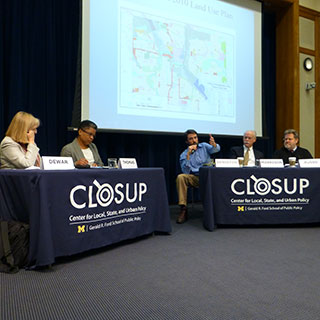 ,
, 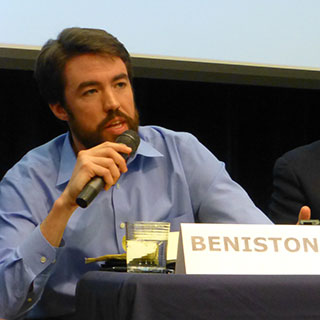 ,
, 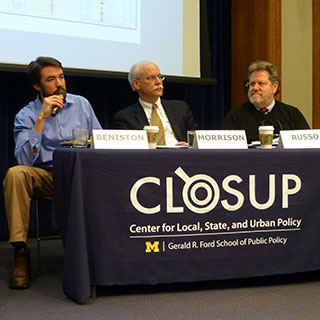 ,
, 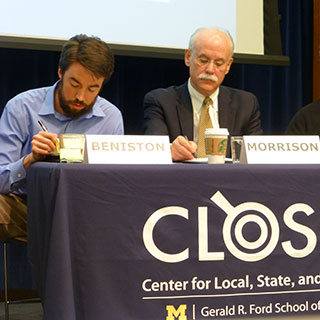 ,
, 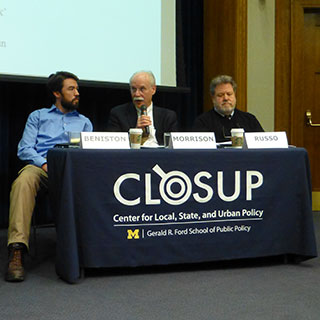
 ,
,  ,
,  ,
,  ,
, 
